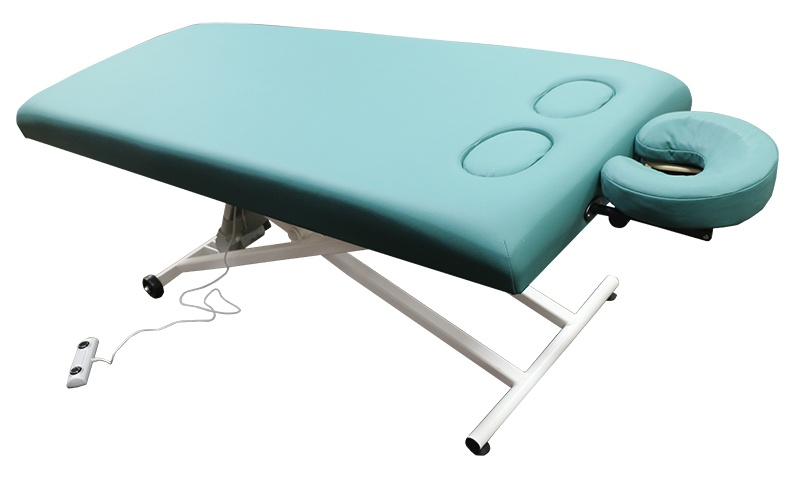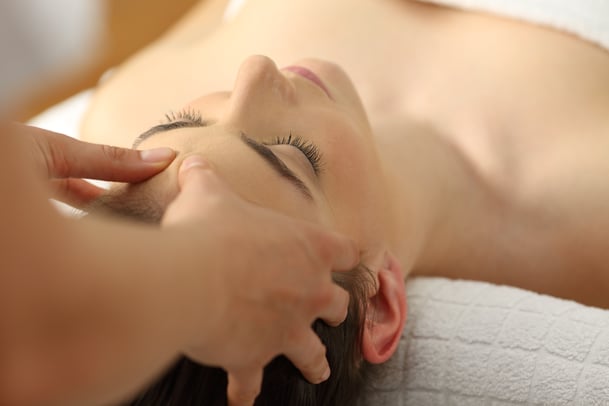 via Shutterstock via Shutterstock |
CST is noninvasive. It uses gentle pressure on the head, neck, and back to relieve the stress and pain caused by compression. It can, as a result, help to treat a number of conditions.
It’s thought that through the gentle manipulation of the bones in the skull, spine, and pelvis, the flow of cerebrospinal fluid in the central nervous system can be normalized. This removes “blockages” from the normal flow, which enhances the body’s ability to heal.
Benefits & Uses
CST is thought to relieve compression in the head, neck, and back. This can soothe pain and release both emotional and physical stress and tension. It’s also thought to help restore cranial mobility and ease or release restrictions of the head, neck, and nerves.
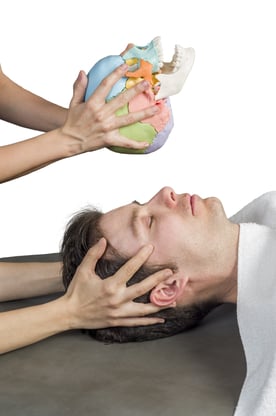 via Shutterstock via Shutterstock |
Cranial sacral therapy can be used for people of all ages. It may be part of treatment for conditions like:
- migraines and headaches
- constipation
- irritable bowel syndrome (IBS)
- disturbed sleep cycles and insomnia
- scoliosis
- sinus infections
- neck pain
- fibromyalgia
- recurrent ear infections or colic in infants
- TMJ
- trauma recovery, including trauma from whiplash
- mood disorders like anxiety or depression
- difficult pregnancies
There’s plenty of anecdotal evidence that CST is an effective treatment, but more research is needed to scientifically determine this.
Side Effects & Risks
The most common side effect of cranial sacral therapy with a licensed practitioner is mild discomfort following the treatment. This is often temporary and will fade within 24 hours.
There are certain individuals who shouldn’t use CST. These include people who have:
- severe bleeding disorders
- a diagnosed aneurysm
- a history of recent traumatic head injuries, which may include cranial bleeding or skull fractures
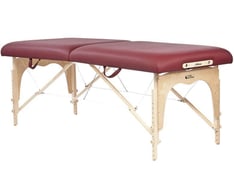 Classic Series Athena Table Classic Series Athena Table |
Procedure & Technique
Using five grams of pressure (which is about the weight of a nickel), providers will gently hold the patient's feet, head, or sacrum to listen to their subtle rhythms. If they detect it’s needed, they may gently press or reposition the patient to normalize the flow of the cerebrospinal fluids. They may use tissue-release methods while supporting a limb.
During the treatment, some people experience different sensations. These may include:
- feeling deep relaxation
- falling asleep, and later recalling memories or seeing colors
- sensing pulsations
- having a “pins and needles” (numbing) sensation
- having a hot or cold sensation
Takeaway
Cranial sacral therapy may be able to provide relief for certain conditions, with the strongest evidence supporting it as a treatment for conditions like headaches. Because there’s a very low risk for side effects, some people may prefer this to prescription medications that come with more risks.
Sources:
- Mann J, et al. (2012). P02.55. Craniosacral therapy for migraine: A feasibility study. DOI: 10.1186/1472-6882-12-S1-P111
- Matarán-Peñarrocha GA, et al. (2011). Influence of craniosacral therapy on anxiety, depression and quality of life in patients with fibromyalgia.
10.1093/ecam/nep125 - What is craniosacral therapy? (n.d.).
upledger.com/therapies/faq.php - Zane T. (2011). A review of craniosacral therapy.
behavior.org/resources/589.pdf
This blog was curated from the article, "Cranial Sacral Therapy" published by Healthline.com on September 18, 2017. Original article can be found here.
You might also like:
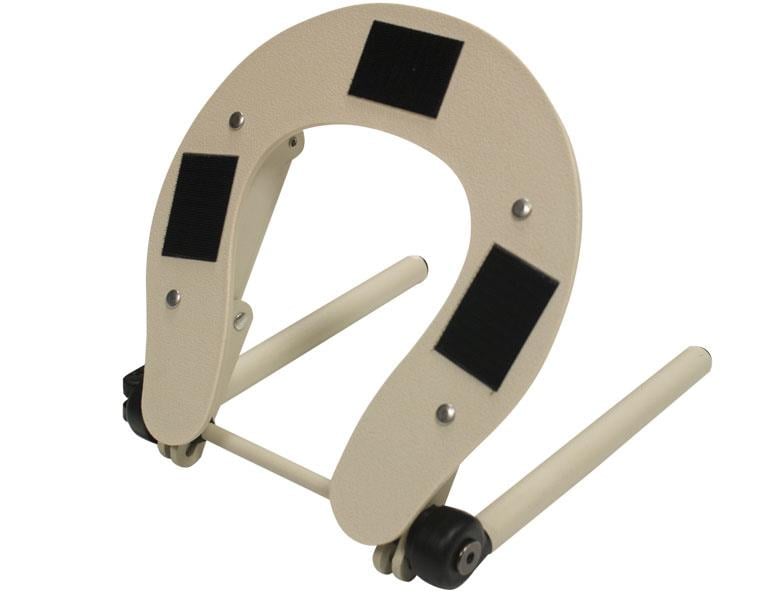 |

Custom Craftworks
Originally founded in 1986, Custom Craftworks supports the vital work of professional manual therapists and educators in the massage therapy and holistic health fields by designing, building and sourcing the best-quality massage tables, chairs, equipment and accessories available. In 2009, the company was acquired by Pivotal Health Solutions based in Watertown, South Dakota.


